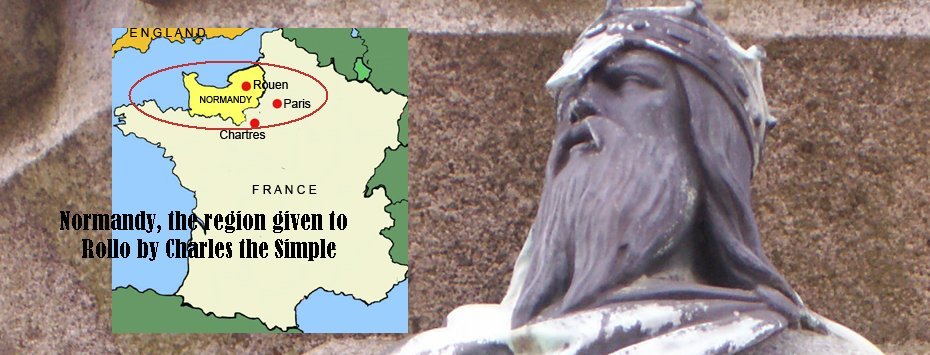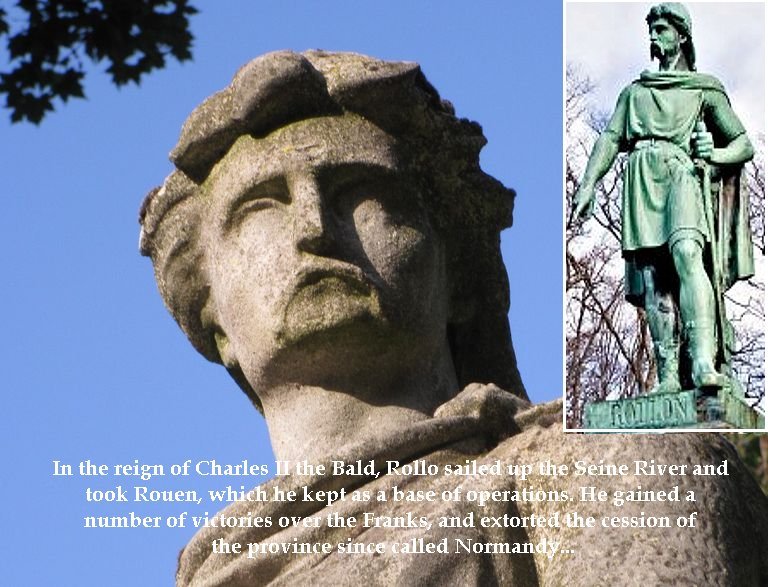Rollo: Viking Sea Lord, Chieftain, Lone Wolf And The First Ruler Of Normandy
A. Sutherland - AncientPages.com - At the height of their glory, the Vikings formed many new Scandinavian dynasties. At first, they were considered foreigners, but they eventually integrated with local communities, even religiously.
One of them was Rollo (also known as Gånge-Rolf), an ancestor of the famous William the Conqueror, who led the conquest of Normans to England and became king of the country in 1066.
Believed to have lived between 846 and 931 AD, the first historical account of Rollo detailed his leadership of the Vikings during their siege of Paris from 885 to 6 AD.
Mentioned in Icelandic sagas, as a man of high social status, Rollo is often referred to as Rolf the Walker ("Ganger-Hrolf, "in Old Danish) because he had such an imposing figure that his horse could not carry him and was obliged to travel on foot.
His impressive figure was richly decorated with golden arm rings, amulets, and the hammer of the god Thor. By a treaty in 911, the Viking chieftain, Rollo, and his followers were granted part of the French coast called Normandy (or the "land of the Normans"). In return, Rollo was to swear loyalty to King Charles the Simple, look to the defense of his domain, and be baptized as a Christian.
The Viking chieftain kept his bargain with the king, and the treaty was beneficial to them both. Rollo's presence in Normandy was legitimate; he settled in the city of Rouen, which he seized earlier, in 876, and there were no further Viking raids into Charles's territory and in times of emergency, Rollo sent his met-at-arms at Charles's disposal.
In his book "The Vikings," Robert Wernick mentions a local tradition that describes Rollo as a brutal man:
"…when some peasants sought the right to hunt and fish in Rollo's woods, lakes, and rivers, he dispatched his uncle, Count Rudolph, to cut off a hand and a foot of each of the would-be-poachers. But he was also sharp-witted and practical. He let himself be baptized, and he lost no time in restoring the churches that he and his fellow Vikings had sacked…"
Statue of Viking Rollo in Ålesund, Norway. Image credit: Nils Harald Ånstad.
"… It was later recounted that when he was on his deathbed, he asked to be buried in the cathedral of Rouen and he ordered large sums of gold to be given to Christian churches…"
He continued to reign over the region of Normandy until at least 928, according to a charter of 918. By the end of the century, these settlers spoke French and had lost their Scandinavian heritage.
Rollo was succeeded by his son, William Longsword (c. 893 -942), William, the second ruler of Normandy, from 927 until his assassination in 942. The offspring of Rollo and his followers became known as the Normans.
After the Norman conquest of England and their conquest of southern Italy and Sicily over the following two centuries, their descendants came to rule Norman England (the House of Normandy), the Kingdom of Sicily (the Kings of Sicily) as well as the Principality of Antioch from the 10th to 12th century, leaving behind a lasting legacy in the historical records of the European continent and even the countries of Near East.
Much Debate On Rollo's True Origin
Like most other figures dated to early history, also Rollo's roots are shrouded in mystery.
Medieval chronicles from Norway and Iceland assert that Rollo and another figure known as Gange-Rolv (also known as Rolv Ganger) were one and the same person. On the other hand, modern Danish historians do not agree with these claims and insist that Rollo was Danish.
In the spring of 2014, a report published by Michael R. Maglio stated that the DNA extracted from the remnants of Rollo’s descendants disclosed them to be of Danish origin. This theory was also criticized, and it was said that the researchers had misidentified corpses.
An 11th-century Benedictine monk and historian wrote: "Rollo sailed boldly from Norway with his fleet to the Christian coast." Likewise, the 12th-century English historian William of Malmesbury stated that Rollo was "born of noble lineage among the Norwegians."
Also, according to one legend, he was a Norwegian scion of a family that had left Norway as outlaws and arrived in northern Scotland to seek freedom and wealth. From there, he took part in many Viking raids, reaching the coast of England and France.
An entirely different account was given by a hisorian of early Norman history, Dudo of St. Quentin, born about 965, who claimed that Rollo and his brother, Gurim (or Gorm) were sons of an influential noble man in Dacia, a province covering the entire Nordic region (Dania and Suecia), which is the Medieval Latin names for Denmark and Sweden.
One of his great-grandsons was known as Robert the Dane.
Rollo's grave is at the Cathedral of Rouen. Image credit: Wikipedia
It is worth mentioning that Dudo’s version of events was partially echoed by the 12th century “Orkneyinga Saga, along with the Landnámabók ("Book of Settlements"). The latter is the medieval Icelandic written work that describes in considerable detail the settlement (landnám) of Iceland by the Norse in the 9th and 10th centuries CE.
Also, according to one legend, he was a Norwegian scion of a family that had left Norway as outlaws and arrived in northern Scotland to seek freedom and wealth. From there, he took part in many Viking raids, reaching the coast of England and France.
Among historians, Rollo - as the great-great-great-grandfather of William the Conqueror - is considered one of the ancestors of the present-day British royal family. He is also an ancestor of all current European monarchs.
Updated on December 6, 2023
Written by – A. Sutherland AncientPages.com Senior Staff Writer
Copyright © AncientPages.com All rights reserved. This material may not be published, broadcast, rewritten or redistributed in whole or part without the express written permission of AncientPages.com
Expand for referencesMore From Ancient Pages
-
 What Did Bronze Age People Do With All That Bronze?
Featured Stories | Aug 5, 2024
What Did Bronze Age People Do With All That Bronze?
Featured Stories | Aug 5, 2024 -
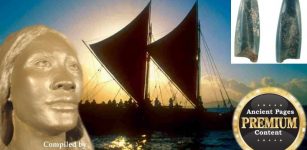 Mysterious Ancient Jade Artifact May Offer Evidence Of Trans-Pacific Contact – Did Ancient Sailors From California Visit New Guinea?
Ancient Mysteries | Jan 14, 2018
Mysterious Ancient Jade Artifact May Offer Evidence Of Trans-Pacific Contact – Did Ancient Sailors From California Visit New Guinea?
Ancient Mysteries | Jan 14, 2018 -
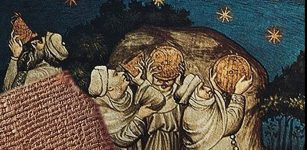 MUL.APIN Tablets: Babylonian Knowledge Of Astronomy And Astrology Recorded In Cuneiform Writing
Artifacts | Sep 27, 2019
MUL.APIN Tablets: Babylonian Knowledge Of Astronomy And Astrology Recorded In Cuneiform Writing
Artifacts | Sep 27, 2019 -
 Enigma Of The Unusual Forest In Disguise
Featured Stories | Sep 17, 2025
Enigma Of The Unusual Forest In Disguise
Featured Stories | Sep 17, 2025 -
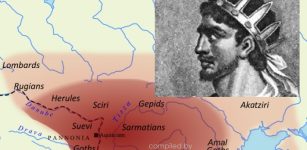 Attila The Hun: The Destroyer Of Rome Among Most Fearsome Enemies The Empire Ever Faced
Featured Stories | Jun 24, 2019
Attila The Hun: The Destroyer Of Rome Among Most Fearsome Enemies The Empire Ever Faced
Featured Stories | Jun 24, 2019 -
 Amazing Archaeological Discovery In A Secret Underground Structure In Transylvania Could Rewrite Ancient History
Featured Stories | Feb 13, 2024
Amazing Archaeological Discovery In A Secret Underground Structure In Transylvania Could Rewrite Ancient History
Featured Stories | Feb 13, 2024 -
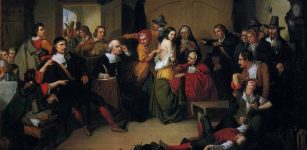 Astronomer Johannes Kepler Saved His Mother From Being Burned As A Witch
Featured Stories | Jan 21, 2017
Astronomer Johannes Kepler Saved His Mother From Being Burned As A Witch
Featured Stories | Jan 21, 2017 -
 Mysterious Ancient Tomb Reveals ‘Impossible’ Cosmic Connection – Wrong Identity – Part 1
Ancient Mysteries | Oct 11, 2020
Mysterious Ancient Tomb Reveals ‘Impossible’ Cosmic Connection – Wrong Identity – Part 1
Ancient Mysteries | Oct 11, 2020 -
 60-Meter Longhouse Discovered Near Viking Ship At Gjellestad, Norway
Archaeology | Dec 6, 2021
60-Meter Longhouse Discovered Near Viking Ship At Gjellestad, Norway
Archaeology | Dec 6, 2021 -
 Why Have The Leibniz Keks 52 Teeth And Are Named After Philosopher Gottfried Wilhelm Leibniz?
Ancient History Facts | Mar 12, 2021
Why Have The Leibniz Keks 52 Teeth And Are Named After Philosopher Gottfried Wilhelm Leibniz?
Ancient History Facts | Mar 12, 2021 -
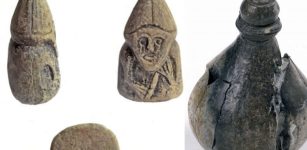 Old Norse Settlers Traded Walrus Ivory With Kyiv – Spectacular Archaeological Finds Reveal
Archaeology | Jun 16, 2022
Old Norse Settlers Traded Walrus Ivory With Kyiv – Spectacular Archaeological Finds Reveal
Archaeology | Jun 16, 2022 -
 Did Our Ancestors Know About Artificial Intelligence?
Ancient Technology | Sep 2, 2015
Did Our Ancestors Know About Artificial Intelligence?
Ancient Technology | Sep 2, 2015 -
 Leonardo Da Vinci’s Mother Might Have Been A Slave – Here’s What The Discovery Reveals About Renaissance Europe
Featured Stories | Mar 30, 2023
Leonardo Da Vinci’s Mother Might Have Been A Slave – Here’s What The Discovery Reveals About Renaissance Europe
Featured Stories | Mar 30, 2023 -
 Norse God Hermod’s Meeting With The Finnish Magician Rostioff Who Revealed The Prophecy Of Vali
Myths & Legends | Feb 13, 2023
Norse God Hermod’s Meeting With The Finnish Magician Rostioff Who Revealed The Prophecy Of Vali
Myths & Legends | Feb 13, 2023 -
 Binary Code Was Used In Ancient India And Polynesia Long Before Leibnitz Invented It
Ancient Technology | Sep 28, 2017
Binary Code Was Used In Ancient India And Polynesia Long Before Leibnitz Invented It
Ancient Technology | Sep 28, 2017 -
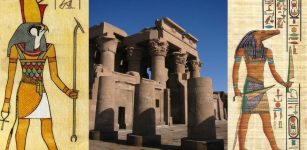 Unusual Double Temple Of Kom Ombo Dedicated To Crocodile God Sobek And Falcon-Headed God Horus
Featured Stories | Mar 14, 2016
Unusual Double Temple Of Kom Ombo Dedicated To Crocodile God Sobek And Falcon-Headed God Horus
Featured Stories | Mar 14, 2016 -
 Rök Stone (Rök Runestone): Longest Runic Inscription Ever Discovered
Featured Stories | Jun 12, 2024
Rök Stone (Rök Runestone): Longest Runic Inscription Ever Discovered
Featured Stories | Jun 12, 2024 -
 Ancient Secrets Of The Ukrainian Stonehenge That Is Older Than The Giza Pyramids Of Egypt
Featured Stories | Jul 17, 2021
Ancient Secrets Of The Ukrainian Stonehenge That Is Older Than The Giza Pyramids Of Egypt
Featured Stories | Jul 17, 2021 -
 Secret Ancient World Buried Under The Vast Takla Makan Desert
Featured Stories | Jun 1, 2020
Secret Ancient World Buried Under The Vast Takla Makan Desert
Featured Stories | Jun 1, 2020 -
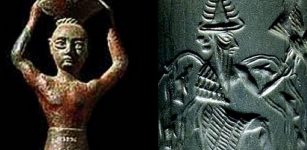 Nammu: Sumerian Goddess Who Got The Idea To Create Mankind In The Image Of Gods
Featured Stories | Apr 1, 2019
Nammu: Sumerian Goddess Who Got The Idea To Create Mankind In The Image Of Gods
Featured Stories | Apr 1, 2019

